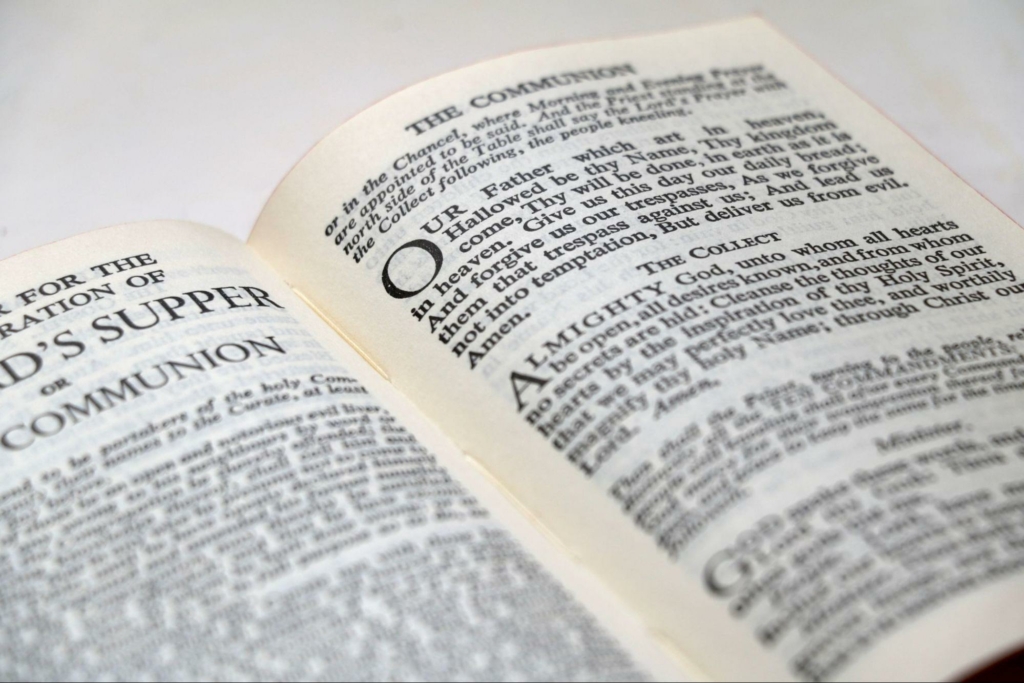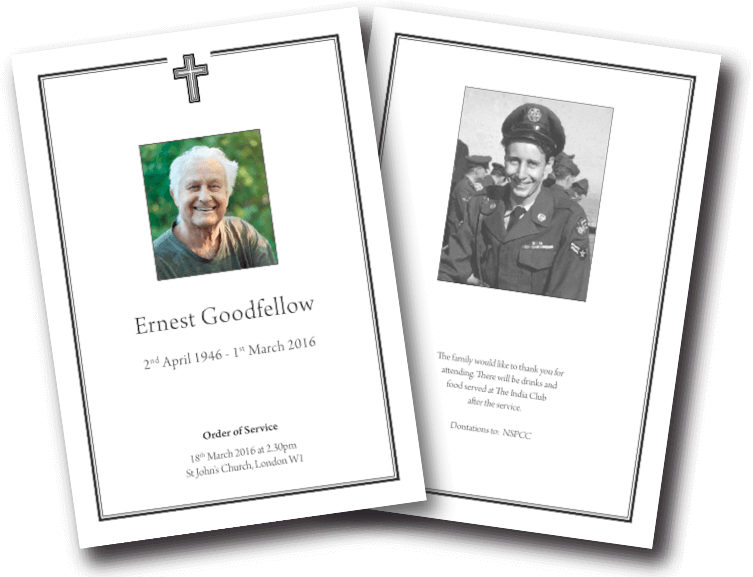The Lord’s Prayer is one of the most popular features on the orders of services we print. So, what’s its history, and why include it in your loved one’s funeral programme?
Perhaps one reason the Lord’s Prayer is used so often is that even if people aren’t strongly religious, they’re familiar with it. We often recited it at school or heard it spoken on television. However, as we’ll explore below, there’s much more to it than that.

Also known as the Our Father or Pater Noster, the Lord’s Prayer is a central Christian prayer.
It comes from the Gospel of Matthew, with a shorter version in the Gospel of Luke (Matthew 6:9-13 and Luke 11:2-4).
It is believed to have been introduced by Jesus to teach us a way to pray. If you’re wondering how to design a funeral order of service, choosing prayers and hymns is a great way to start, and you shouldn’t feel bad about picking those which are so familiar. They can provide a unifying element that’s hard to achieve otherwise. We make it easy to download various hymns on our website.
Bring people together by including this prayer in your order of service.
The Lord’s Prayer can be adapted for any funeral; it is not meant to be recited mechanically, as it might often seem. Rather it is to be prayed with heartfelt sincerity.
It can work as a unifying element in funeral services. Since it’s familiar to so many of us, it provides room for us to express our emotions, without needing to reflect on an unfamiliar text.
Deeply meaningful to many Christians, the Lord’s Prayer helps us express our faith and trust in God. In funeral services it is a wonderful way to provide comfort and support to the grieving family and friends of the deceased. It also provides words of hope and assurance, reminding mourners of the promise of eternal life for those who believe in God.
The Lord’s Prayer encourages us to reflect on its meaning and purpose, including in relation to an individual person.
The Lord’s Prayer is so well-known it’s tempting to believe that the current version has been around in Britain forever. However, there’s been several different English translations from Greek or Latin, beginning around AD 650 with the Northumbrian translation.
Of those in current liturgical use, the three best-known are:
- the 1662 Book of Common Prayer of the Church of England
- the slightly modernised “traditional ecumenical” form used in the Catholic and many Protestant Churches. The concluding doxology (“For thine is the kingdom and the power, and the glory, for ever and ever. Amen”) is often added at the end by Protestants.
- the 1988 translation of the ecumenical English Language Liturgical Consultation (ELLC).
How to design a funeral order of service.

Order-of-service.co.uk will work with you to create the most beautiful funeral programme possible. Whatever tone you’re looking to create, we always listen closely to relatives of the deceased. We specialise in personalised order of services which do your loved-one justice.
We can help you create an outline, including opening remarks, readings, musical performances, speeches, and any special rituals or traditions. Why not view our best sellers to see what we can achieve?
One thing that’s important to include is lovely photographs of your friend or relative. We will ensure they’re printed to the finest standards and arranged attractively in your order of service.
We also design and print non-Christian orders of service, including Hindu, Jewish, and Humanist funeral ceremonies.
If you need help designing an order of service, simply contact our team for more information.
